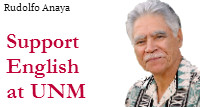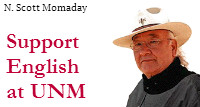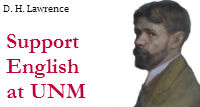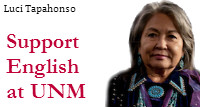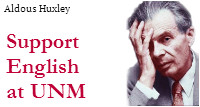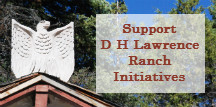Winter Intersession 2017 Course Descriptions
219.028: Technical and Professional Writing
Online
Stephen Benz, sbenz@unm.edu
English 219 focuses on how to write and design documents commonly found in the professional workplace. We'll learn about creating documents such as professional letters, memos, procedures, manuals, proposals, and analytical reports. Our focus will be on the appropriate structure, writing style, and page layout to use in producing documents that are aimed at meeting reader's needs.
224.033: Introduction to Creative Writing
MTWRF 9:30 AM- 1:30 PM
Diane Thiel, dthiel@unm.edu
Are you interested in creative writing? This is the course for you! It is an ideal opportunity to complete a full credit course in a short period of time (Jan. 8 -12, 2018, 9:30-13:30; Hybrid 50% online). We will use an intensive writing conference model. In addition, if you have plans to continue taking creative writing courses, this will provide the prerequisite to the 300-level courses.
The course is structured around a set of creative exercises that will spark your imagination and hone your writing skills. We will practice fiction, poetry, nonfiction and some dramatic writing in this interactive workshop setting. Short readings by well-known writers will enrich discussions and provide context for the exercises. The online aspects of the course will be easily accessible audio and visual resources. For more information about Diane Thiel (UNM Professor and author of books in several genres) please see her webpage: www.dianethiel.net. Please email Professor Thiel with any questions!
315.001: Harlem Renaissance
Online
Finnie Coleman coleman@unm.edu
In 1921, editor Paul Kellogg began publishing The Survey Graphic a sociological journal that Kellogg hoped would eventually rival established magazines like The Nation. Dedicated to “sociological fact,” the Survey Graphic was a companion to the more established journal Survey, which catered to a largely academic audience. In the fall of 1924, Kellogg approached Howard University professor Alain Locke to serve as guest editor for a “Harlem Number” of the Survey Graphic. That historic volume was published in March 1925. The following year Locke would republish materials from this issue of the journal in his landmark anthology The New Negro (1925). Introducing his collection to a broader reading public, Locke wrote:
“In the last decade something beyond the watch and guard of statistics has happened in the life of the American Negro and the three norns who have traditionally presided over the Negro problem have a changeling in their laps. The Sociologist, the Philanthropist, the Race-leader are not unaware of the New Negro, but they are at a loss to account for him. He simply cannot be swathed in their formulae. For the younger generation is vibrant with a new psychology; the new spirit is awake in the masses, and under the very eyes of the professional observers is transforming what has been a perennial problem into the progressive phases of contemporary Negro life.”
It is notable that Locke alludes to the three female norns of Norse mythology to discuss the rapid and profound changes that were occurring in Black communities across the United States of America in the 1920s. These changes reflected the rise of “truths” to vanquish the body of myth that had for so long obscured important points of fact about the Black community. Myths of Black inferiority had long been used to discount, diminish, or even deny the presence of a Black aesthetic and the great human potential of a legally disfranchised people. Like so many other Black intellectuals of the period, Locke recognized that he was witnessing history in the making. Our course is an introduction to the art, literature, and music of the Harlem Renaissance. The Harlem Renaissance was one of the most fecund periods in all of American literature and a watershed moment in the development of African American cultural history. Before delving into the literature, music, and art of the Harlem Renaissance we will review African American cultural history with an eye toward better understanding Black identity development and what it meant to be a Black American on the eve of the Harlem Renaissance. With the proper context established, we will read the works of the major writers from the period, discuss the visual arts, and familiarize ourselves with the genesis of Jazz and Blues music. We will close the course with a look at how the Harlem Renaissance set the stage for the Black Arts Movement of the late 1960s and early 1970s and the coterminous rise of Hip Hop Culture.
388.002: The Space-Age Epic
Online
M. R. Hofer mrh@unm.edu
The dates for this interdisciplinary analysis of the fantasy and reality of space travel — 1955 to 1980 — effectively span the period from the planning of the satellite Sputnik I to the first successful flight of the U.S. space shuttle Columbia. Grounded in literature, film, music, history, and philosophy, the course is based on widespread notions of science “fiction” (which is, of course, not limited to prose) becoming thinkable possibility, even “fact.” Beginning after the so-called Golden Age of science fiction and stopping before the rise of Cyberpunk, it adopts the New Wave focus on the person holding the “gizmo” rather than the oddness of the “gizmo” itself. In terms of critical thinking, its overarching objective is to address in critical, historical, and conceptual contexts the extension of modernist aesthetic innovation into a multi-generic proto-postmodernism that asks meaningful questions about forms of human discovery. Our key themes turn on ideas of normativity and difference, including representation, reality, freedom, authority, and, especially, the self & the other.
There are no prerequisites for this course, and no formal knowledge of literary criticism, history, or theory is required in order to be successful in it.
